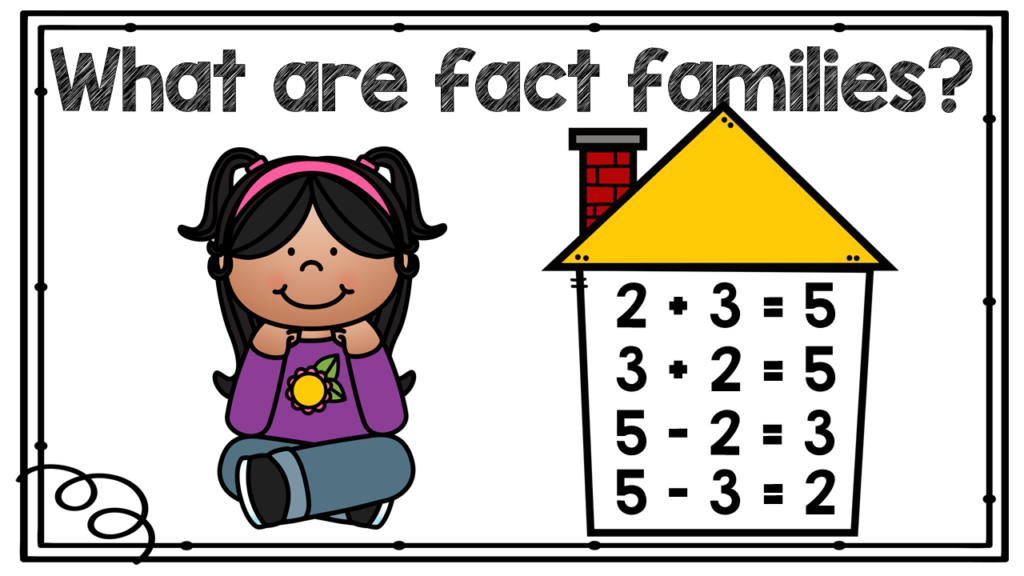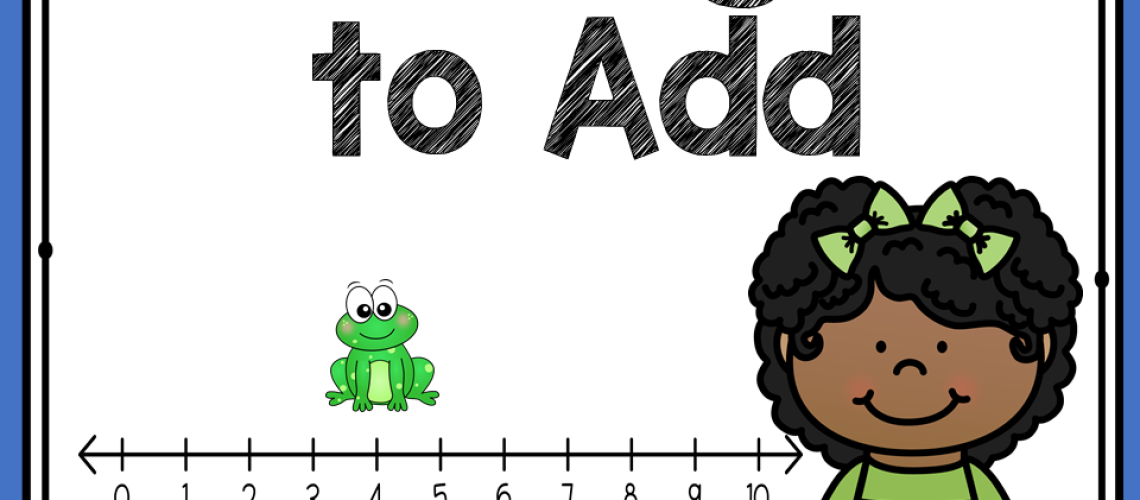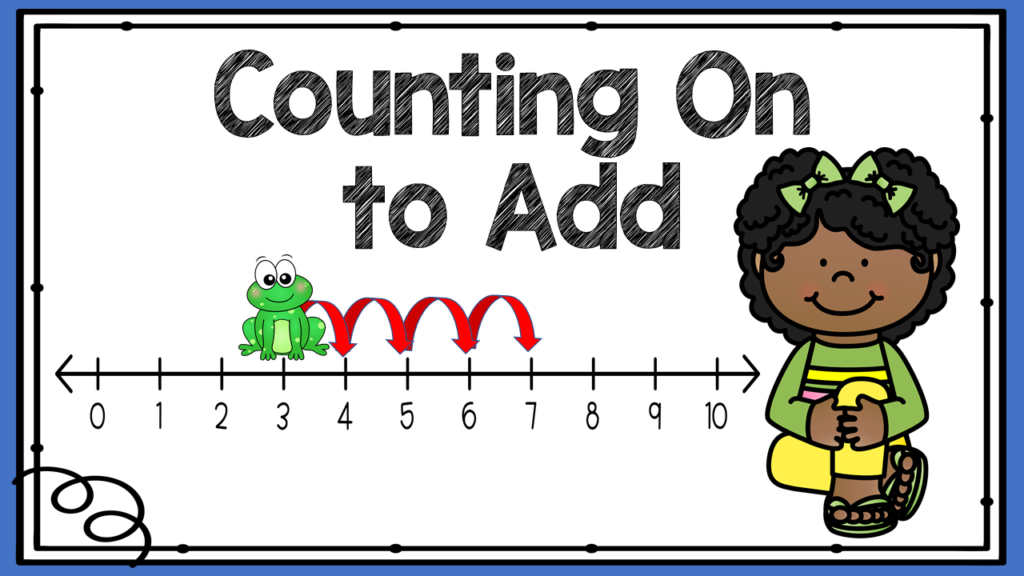
Counting on Strategy
Hi Friend! Are you sitting at your desk looking at your curriculum and asking yourself, “How am I supposed to be teaching counting on strategy to add?”. Don’t worry; we’ve all been there! Counting strategies are essential because they reinforce addition concepts and mental math in both kindergarten and first grade. Real talk? I spent the first year teaching first grade, wondering how I could help my students achieve their personal best and make sure that I was providing developmentally appropriate instruction. I came from fourth grade, where many of my students still couldn’t add fluently within 10. I know…I know…. K-3 teachers are crying everywhere, and I know that we have taught them how to do it. But I started wondering why they still hadn’t mastered that skill three years later! I started looking for ways to increase student engagement, as well as student achievement. I found that developmentally students should work through the mathematically learning progression using a concrete, pictorial, and abstract approach (CPA) to develop mastery. I’ll tell you more in a bit, but basically, this means using manipulatives, drawings or pictures, and THEN written equations or number sentences. By skipping any of these stops along the progression, you may see students begin to struggle with mastery o,”f mathematical concepts. But, don’t fret. You can always revisit any stage of the progression!
What is Counting On Strategy?
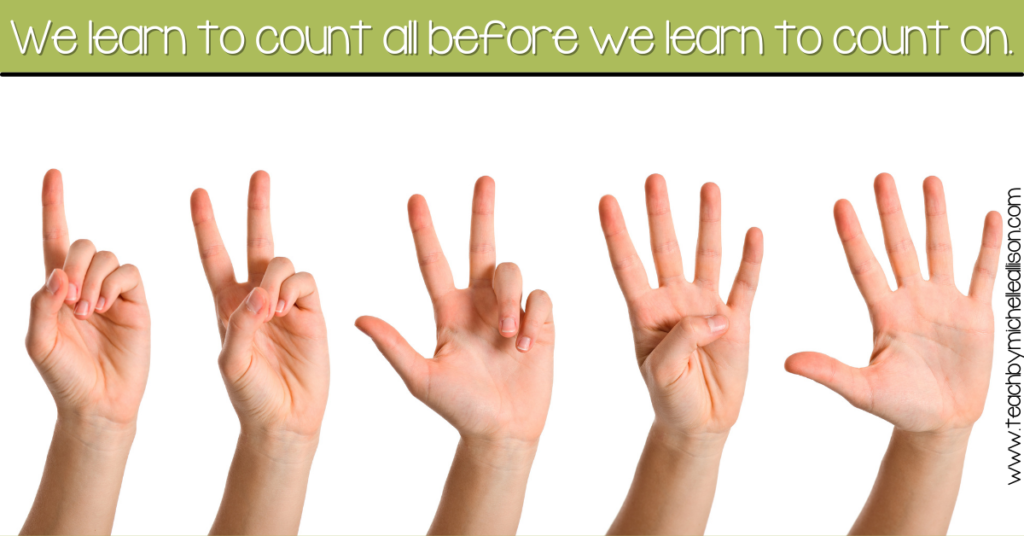
Let’s think about early math… Early math skills evolve from counting all to counting on. But, wait what’s the difference?
“Counting all”, or counting all of the numbers starting from one, is very typical for kindergarten students as they begin to develop a stronger foundation of number sense. Students will count from 1 and count every number until they have counted all of the objects. If they lose track, they will go back to one and begin again. They aren’t yet able to start counting from a number other than one.
In kindergarten, students begin to put together numbers within ten. At the beginning of the year, students just being introduced to the concept of addition are likely to count all of the objects to find the sum. If they lose count, they will go back and recount until they have counted accurately.
“Counting on” is one of the earliest addition strategies taught in math. Most children are ready to explore the counting on addition strategy in first grade. Counting on practice requires rote counting AND a strong understanding of numerical order. Before a child can count on successfully, they should be able to count from any number other than 1. For instance, can the student begin at eight and count to 20?
Once students can count on from a given number, they are ready to try the counting on strategy. They should be able to hold a given number in their head and count on accurately. Woohoo, for being able to do mental math!
Progression for Counting On Addition Strategies
There are many ways to teach this addition strategy. Just remember that developmentally students should work along the learning progression using a concrete, pictorial, abstract approach (CPA). Let’s take a look at some ways to do that while teaching students to count on to add!
Concrete Phase
My students love this phase because it means having things in their hands or moving their bodies to act out math concepts. You can use anything to represent counting on with your students. Whether in the classroom or out on the playground at recess, you can find objects! Here are some ideas of concrete objects that children can use at this stage:
Students, especially our youngest learners, need to explore math concepts through concrete objects/manipulatives. The concrete phase is the “doing” stage. In this stage of learning first, grade students use concrete objects to model math problems.
- Math racks (rekenreks)
- Dominoes
- Ten frames with manipulatives
- Unifix cubes, linking cubes, Lego, bears, etc.
- Beads
- Cereal or snack pieces
- Small toys
- Small rocks
Pictorial Representations
Pictorial is the “seeing” stage. In this stage, visual representations of the concrete objects are used to model problems. I have found that students understand best by creating their own visual model of the problem. I encourage students to make a connection between the objects they handled in the concrete stage and the abstract pictures that they draw to represent the objects from the problem. Some ways for students to create representations of mathematics with pictorial representations include:
- Drawing picture models to match a story problem
- Creating a model of a ten-frame to represent an equation
- Number lines with arrows to demonstrate an addend and counting on until you reach the sum.
Abstract
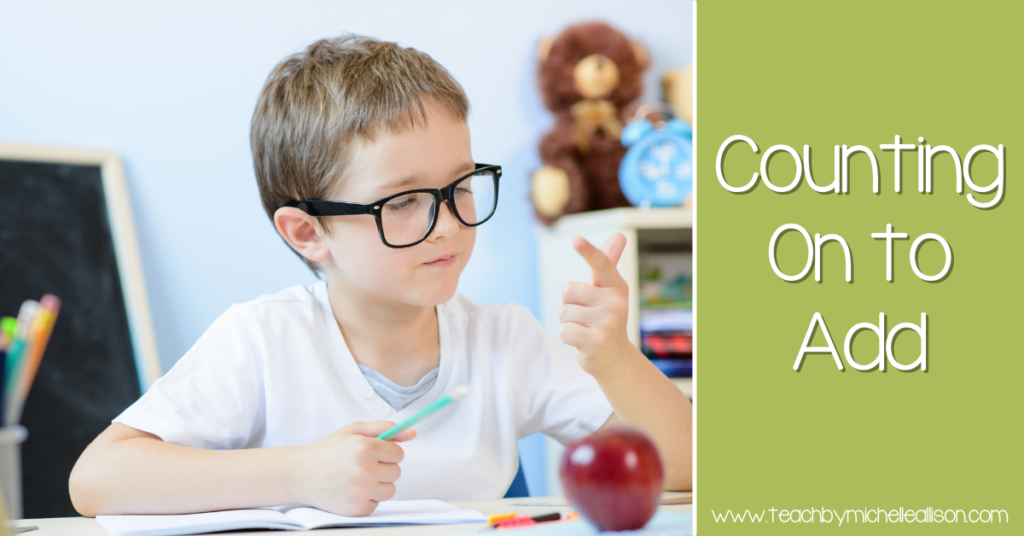
Once students have a strong understanding of the concepts through the concrete and pictorial phases, students can progress to the abstract phase. In the abstract phase, students can understand the numerical symbols associated with a problem. They can see how the numbers in the problems represent a real-life scenario or problem. It’s important to note that students are typically not successful in this stage until they have a solid understanding of the concrete and pictorial stages of a problem. I cannot even tell you how many times I’ve moved to the abstract phase with my students, only to realize that we need to go back to the concrete or the pictorial phase for a few days. I know you can feel my pain, right?!
CPA is a gradual, systematic approach with each stage building on to the previous. Give it a try as you teach students to count on to add, and let me know what you think in the comments!
Addition Games for Counting On to Add
As always, I have some fun suggestions for your students to practice this strategy! Recently, my students have loved using a deck of cards and dice. They turn over one card and roll the dice. The first person to count on correctly keeps the card. Here are some other things for you to consider:
- Use two dice to practice counting on from the larger number
- Use a deck of cards with partners. Each of you flips a card and races to see who is the first to answer correctly.
- Use this deck of Boom Cards as a whole class review. Cheer each other on as they take turns completing the deck. Then assign it for practice! Wondering what Boom Cards are? Check out this post here!
Counting on to Add
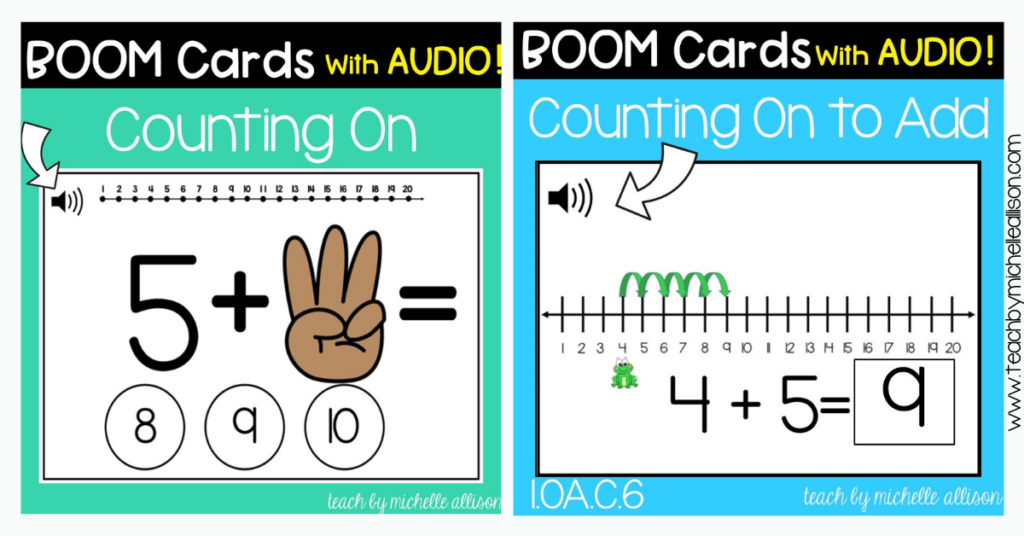
This activity is part of the bundle Addition Strategies | Boom Cards | Math Boom Cards. Make counting on fun, easy, and engaging in your classroom with these resources!
There are so many addition strategies to teach! Addition, math facts are essential for helping students develop automaticity and fact fluency. Learn ways to teach counting on to add with addition math games!
Counting on is one of the first steps in mental math addition, paving the way for confident and independent learners. I can’t wait to hear from you about how you are teaching, counting on strategies to add! Let me know if you tried any of these strategies!
This activity is part of the bundle Addition Strategies | Boom Cards | Math Boom Cards. Make counting on fun, easy, and engaging in your classroom with these resources!
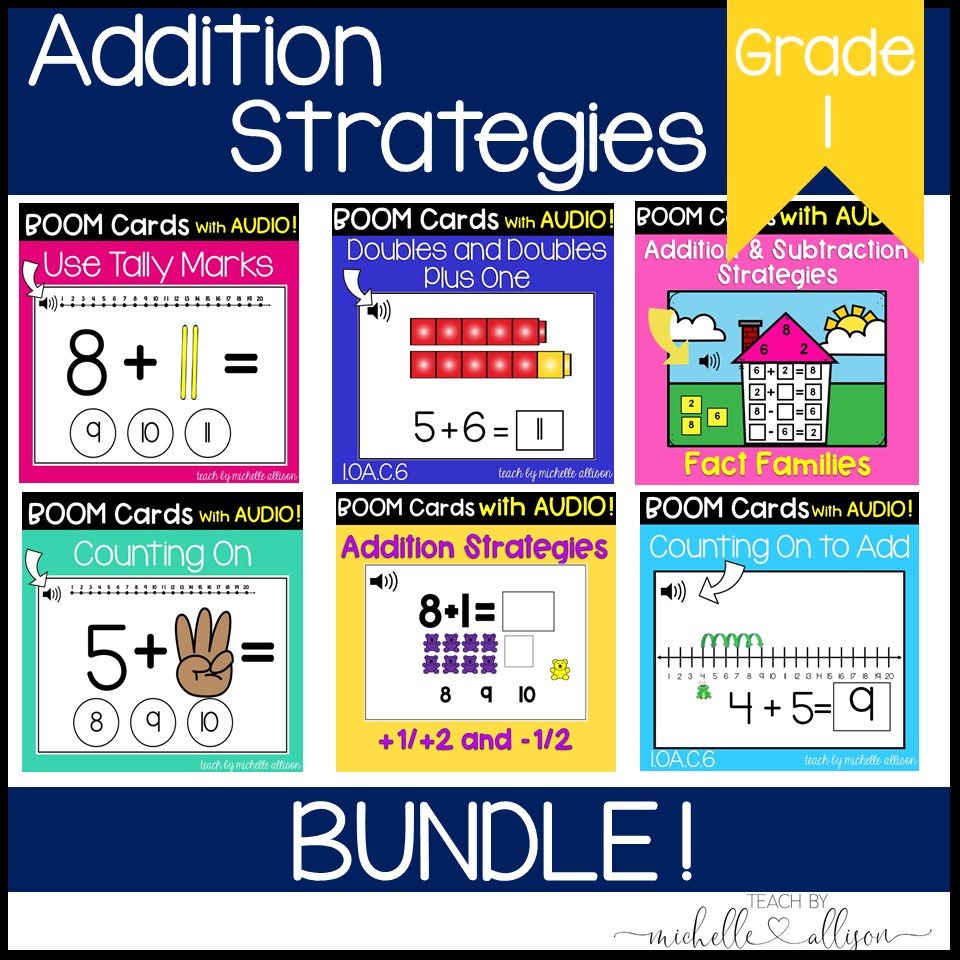
Counting on is one of the first steps in mental math addition, paving the way for confident and independent learners. I can’t wait to hear from you! Let me know if you tried any of these strategies!
Cheers!
Cheers!
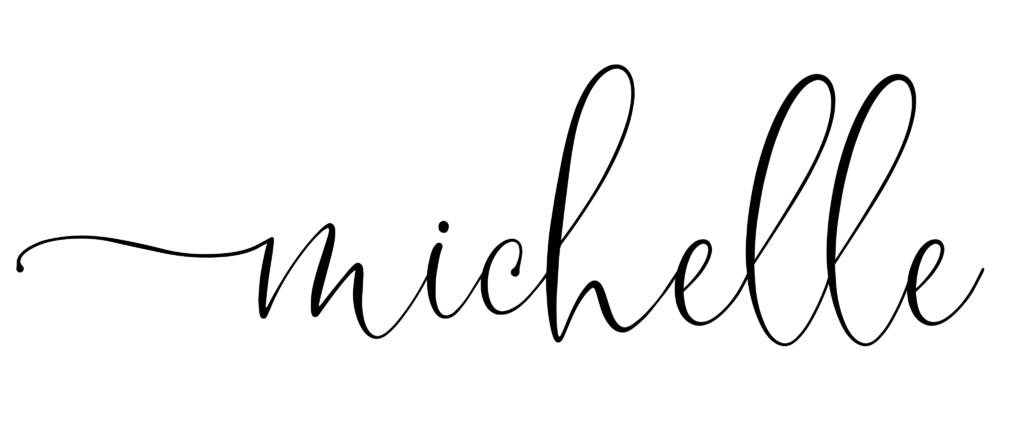
Are your students learning about fact families? Check out this post here.
